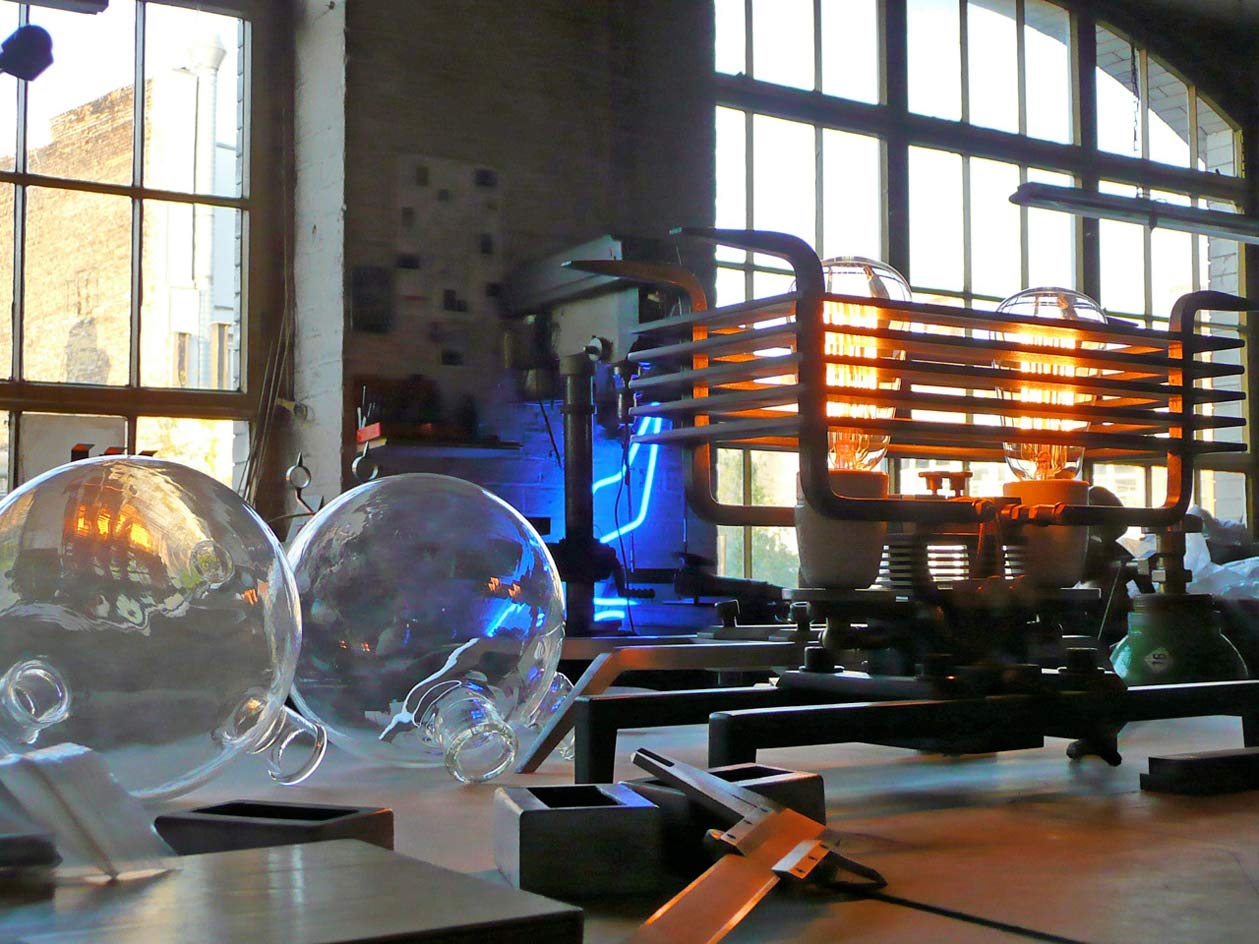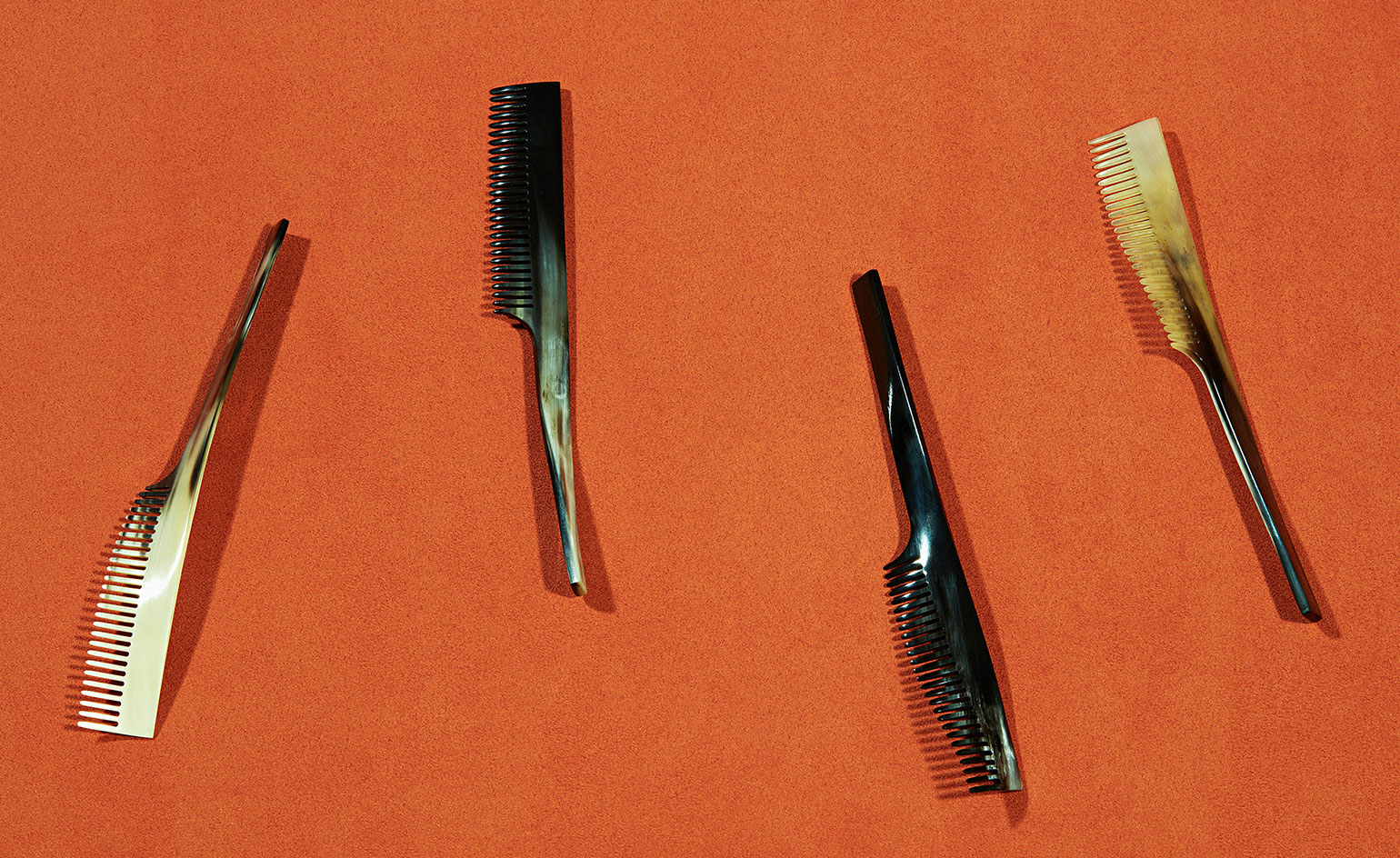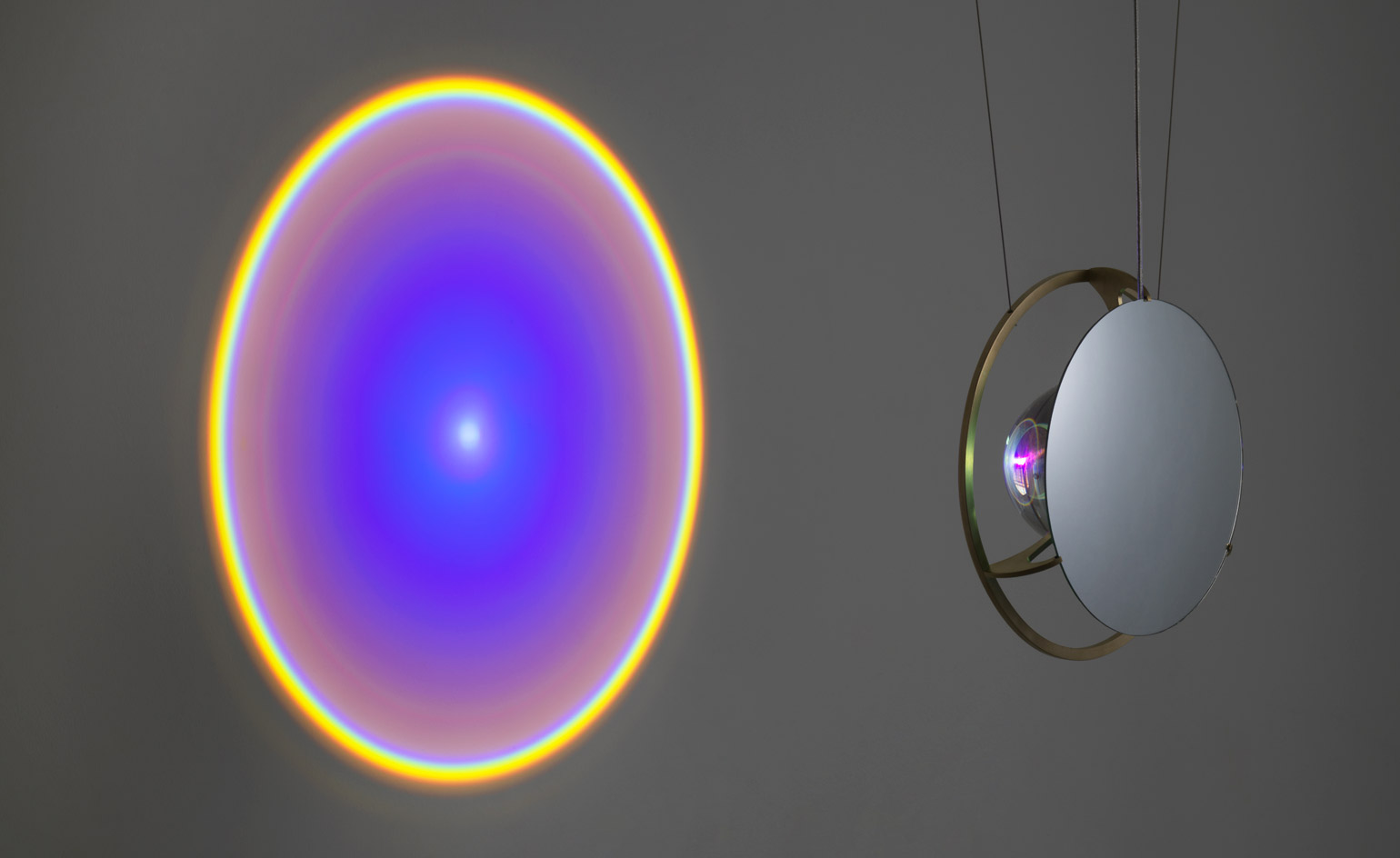Frank Buchwald's Nixie Machine illuminates time at Geneva's MAD Gallery

It's good to know that the fascination with finding new ways to tell the time is not a wrist-focused pursuit. And our friends at Geneva's MAD Gallery, dedicated to all things mechanical, are just the people to underline the point. Frank Buchwald's Nixie Machine, currently on show there, is so nicely considered as to remind us that the display clock is not yet relegated to a bygone era - even if it is inspired by one.
Of course, you can still pick up Nixie bulb clock designs, but Buchwald's look different. They are different: the Nixie Machine's hours, minutes and seconds indicators are beguiling because of their particularly authentic glow - achieved using original, preserved Z568M Nixie tubes manufactured by RFT in Communist East Germany during the 1960s.
Buchwald, a German artist and former science-fiction illustrator, branched into interior and furniture design and is known for his Machine Lights, a series of handcrafted steel and brass lighting with an old-school industrial bent.
'The way I have combined a metal and a luminous element here is not dissimilar to my Machine Lights,' says the designer. 'But this time, there was a numerical aspect to my creation - a clock. When you grapple with numbers - sequence them, order them - you soon end up working with a numerical philosophy, and I found this fascinating, so the six Nixie tubes needed to take centre stage.'
First popular in the 1950s, Nixie tubes, connected via electronic circuitry, used 'glow discharge' to present figures and were seen as the perfect indicators for multi-digit displays on computers, counters and clocks. Now, they are hugely collectable and it was MB&F friend and Nixie clock aficionado Alberto Schileo who, having sourced the tubes - tucked away in a sealed Bulgarian army depot - approached Buchwald with an idea.
'I had a once-in-a-lifetime opportunity to acquire such beautiful "new-old stock",' Schileo recalls, 'so I started thinking about a high-end Nixie clock and Frank's work immediately came to mind.' Schileo then collaborated with Buchwald, creating the electronic circuit board that enables the Nixie Machine's six-digit display.
The clocks - just 12 have been made - are undoubtedly nice on the eye but Buchwald's process, particularly his pen-and-marker technical drawings, add a heartfelt quality: 'I am passionate about sketching because it helps me find the essence of a new object,' he says. A prototype follows which, in the case of the Nixie Machine, took a year to complete. The finished Nixie Machines are made up of 350 handcrafted pieces, created by Buchwald from bars and blocks of raw metal, and, of course, six authentically robust tubes.
Receive our daily digest of inspiration, escapism and design stories from around the world direct to your inbox.

Buchwald branched into interior and furniture design and is known for his Machine Lights, a series of handcrafted steel and brass lighting with an old-school industrial bent

His work reminds us that the display clock is not yet relegated to a bygone era - even if it is inspired by one

The Nixie Machine's hours, minutes and seconds indicators are beguiling because of their particularly authentic glow - achieved using original, preserved Z568M Nixie tubes manufactured by RFT in Communist East Germany during the 1960s

'The way I have combined a metal and a luminous element here is not dissimilar to my Machine Lights,' says the designer. 'But this time, there was a numerical aspect to my creation - a clock. When you grapple with numbers - sequence them, order them - you soon end up working with a numerical philosophy, and I found this fascinating, so the six Nixie tubes needed to take centre stage'

First popular in the 1950s, Nixie tubes, connected via electronic circuitry, used 'glow discharge' to present figures and were seen as the perfect indicators for multi-digit displays on computers, counters and clocks. Now, they are hugely collectable and it was MB&F friend and Nixie clock aficionado Alberto Schileo who, having sourced the tubes - tucked away in a sealed Bulgarian army depot - approached Buchwald with an idea

The finished Nixie Machines are made up of 350 handcrafted pieces, created by Buchwald from bars and blocks of raw metal, and, of course, six authentically robust tubes
Caragh McKay is a contributing editor at Wallpaper* and was watches & jewellery director at the magazine between 2011 and 2019. Caragh’s current remit is cross-cultural and her recent stories include the curious tale of how Muhammad Ali met his poetic match in Robert Burns and how a Martin Scorsese Martin film revived a forgotten Osage art.
-
 A day in Ahmedabad – tour the Indian city’s captivating architecture
A day in Ahmedabad – tour the Indian city’s captivating architectureIndia’s Ahmedabad has a thriving architecture scene and a rich legacy; architect, writer and photographer Nipun Prabhakar shares his tips for the perfect tour
-
 You can now stay in one of Geoffrey Bawa’s most iconic urban designs
You can now stay in one of Geoffrey Bawa’s most iconic urban designsOnly true Bawa fans know about this intimate building, and it’s just opened as Colombo’s latest boutique hotel
-
 Pentagram’s identity for eVTOL brand Vertical Aerospace gives its future added lift
Pentagram’s identity for eVTOL brand Vertical Aerospace gives its future added liftAs Vertical Aerospace reveals Valo, a new air taxi for a faster, zero-emission future, the brand has turned to Pentagram to help shape its image for future customers
-
 Out of office: The Wallpaper* editors’ picks of the week
Out of office: The Wallpaper* editors’ picks of the weekThe rain is falling, the nights are closing in, and it’s still a bit too early to get excited for Christmas, but this week, the Wallpaper* team brought warmth to the gloom with cosy interiors, good books, and a Hebridean dram
-
 Biennale de l’Image en Mouvement: radical reflections on surreal times
Biennale de l’Image en Mouvement: radical reflections on surreal timesAt Centre d’Art Contemporain, Geneva, the Biennale de l’Image en Mouvement 2021 kicks off with group show ‘A Goodbye Letter, A Love Call, A Wake Up Song’, a full house of subversive moving image commissions
-
 Combs turn artworks at Geneva’s Máti gallery
Combs turn artworks at Geneva’s Máti galleryDesigner Aurore Piedigrossi untangles the history of the comb with her Grands Hers collection at Geneva’s Máti gallery
-
 Olafur Eliasson reflects on ways of seeing ahead of his latest exhibiton
Olafur Eliasson reflects on ways of seeing ahead of his latest exhibiton -
 Photographer Fabian Oefner tricks the eye at MAD Gallery in Geneva
Photographer Fabian Oefner tricks the eye at MAD Gallery in Geneva